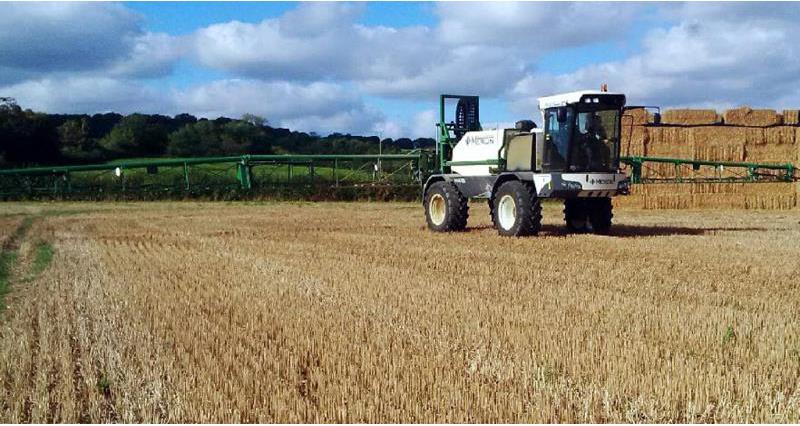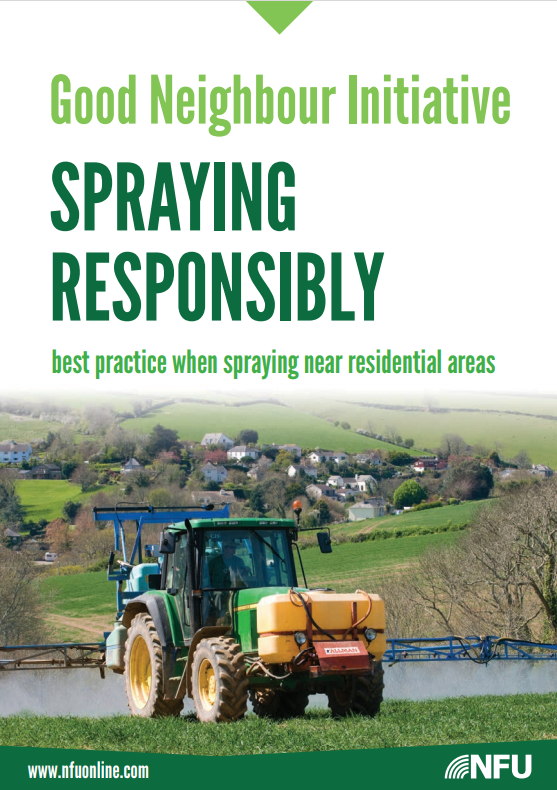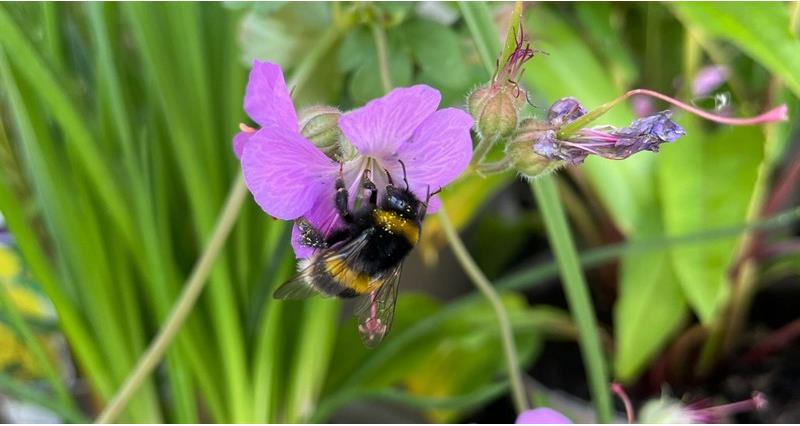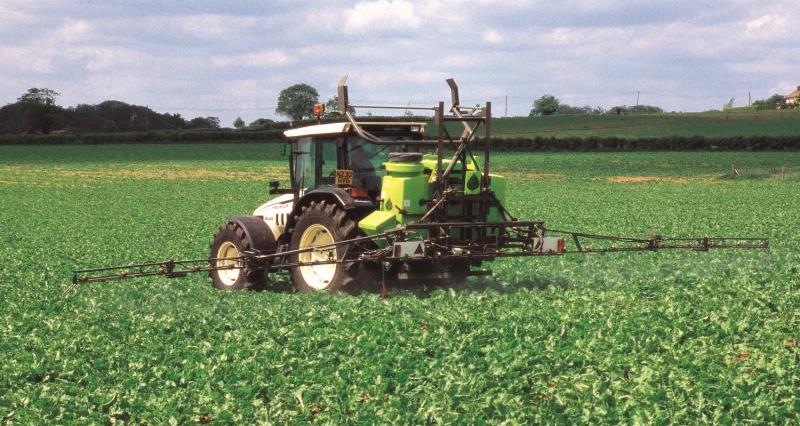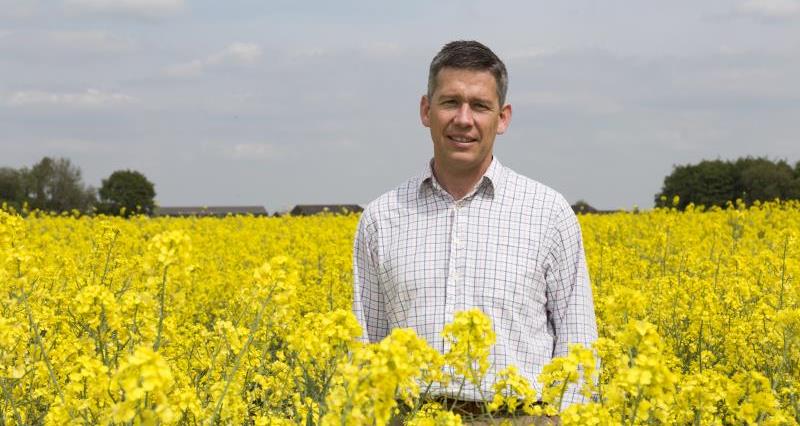What are PPPs (plant protection products)?
Plant protection products, often referred to as pesticides, help protect plants from pests and diseases. They are used to:
- control or kill unwanted pests that damage or destroy crops
- enhance the ability of crops to defend themselves from pests
- reduce the vulnerability of crops to attack by pests.
These pests include insects, weeds and crop diseases. There are three main types of PPPs:
- herbicides (which control weeds and unwanted vegetation)
- insecticides (which control insect pests like aphids)
- fungicides (which tackle harmful crop diseases like potato blight).
These products can be applied in a number of different ways – sprays, seed treatments, or as pellets.
Growers are also increasingly using biopesticides. Biopesticides are PPPs that have a biological origin rather than being man-made.
They include microbes (e.g. bacteria, viruses, fungi) and the chemicals insect pests use to communicate with each other (e.g. pheromones). Biopesticide PPPs generally pose fewer risks than conventional pesticides, but currently there are relatively few available to control pests, diseases and weeds.
How PPPs are used
As the world’s population continues to grow we need to find ways of producing more food from the same amount of land while impacting less on the environment.
Farmers use integrated pest management techniques – such as rotating which crops are planted in certain fields, choosing varieties of crops that are more resistant to pests, and cultivating the land, and encouraging natural enemies – to help control the thousands of weeds, insect pests and disease which threaten our food crops and to keep the use of PPPs to a minimum.
Farmers only use PPPs if they have to. For example, if they know that, in spite of all the other measures that have been put in place, there is still a significant risk of major damage to the quality and quantity of a crop.
Without the products, it has been estimated that some crop yields could fall by up to 50 per cent, and some crops, such as frozen peas, apples and fresh carrots, would become extremely challenging to grow in the UK.
It would also mean much more land would be needed to grow the same amount of food as is currently produced.
Plant protection products also help keep food prices down.
Higher food prices would damage other sectors of the economy, while consumers would also suffer a reduction in the health benefits of having a wide choice of affordable fresh fruit and vegetables.
How PPPs are regulated
PPPs are among the most highly regulated chemical products in the world.
Government ministers approve all plant protection products before they can be marketed or used in the UK. They are regulated by the HSE and only allowed to be used if the evidence shows they do not present any unacceptable health risks to the public, the people who apply them, the environment, or animals.
Rigorous safety assessments are undertaken to ensure that any residues which might remain in food crops will not be harmful to people.
The safety of products is also reviewed regularly to take account of progress in science and technology and experience gained since the active substance was last reviewed.
Any company wanting to get a new product approved must submit an application containing information on any potential health risks, including data on the potential to cause cancer and damage human reproduction. Information must also be supplied on how effective the new product is, whether it is safe for the people who will be applying it, and whether it could impact on the environment in any way.
Research released in April 2016 showed that, on average, it takes 11 years and costs around £230 million to bring a new plant protection product to market.
Reauthorisation of pesticides
It makes sense for the authorisations of PPPs to be reviewed as the science and our understanding of the products develops and increases.
There are a number of ways in which this reauthorisation process is carried out.
The GB authorisation process is still in development post Brexit, but it currently follows the same process as the EU.
In the EU, legislation dictates that authorisations must be reviewed at least once every decade, to take account of progress in science and technology and experience gained since the active substance was last reviewed.
In other countries, like the United States, they operate a “call-in” system where authorisations are reviewed in response to new evidence emerging.
The rules which farmers follow
Good agricultural practice requires farmers and growers to follow the basic principle of using as little PPPs as possible to deal with a problem, and only when it is absolutely necessary.
British farmers have a high level of good stewardship in using pesticides through engagement with programmes such as the Voluntary Initiative (VI), Campaign for the Farmed Environment (CFE) and Catchment Sensitive Farming.
Farmers are legally required to keep accurate records of any products they spray. Under farm assurance schemes, these records are checked every year by independent scheme inspectors to ensure standards in crop protection are understood and applied correctly, and are available to the HSE.
Under the main farm assurance schemes, advisers making recommendations on PPP use have to be qualified agronomists – experts in soil management and crop production.
Sprayer operators – Good Neighbour Initiative
People who apply PPPs have to undergo training and achieve specific qualifications in product application before they are allowed to do so.
The National Register of Sprayer Operators (NRoSO) provides ongoing training through CPD (Continuous Professional Development), while the National Sprayer Testing Scheme (NSTS) tests spraying equipment annually to ensure it is safe and reliable.
The NFU and other stakeholders have worked together to produce the Good Neighbour Initiative to ensure people living near areas where pesticides are used are kept informed and any concerns they have are addressed.
Our guide on spraying responsibly also outlines sprayers' responsibilities when using plant protection products, especially near footpaths or residential areas.
Many farmers also complete Integrated Pest Management Plans to show they are complying with the Sustainable Use of Pesticides Directive to minimise the risks associated with PPP use and of pests developing resistance to products. As the number of active ingredients available falls, the importance of resistance management increases.
Pesticide resistance
PPP resistance is the ability for a target pest to naturally develop the ability to survive exposure to a product that would normally kill it.
Repeated exposure to a product over time can lead to pests developing resistance and can mean products that were once vital to control a problem no longer have the desired effect. This is why judicious use of products as part of integrated pest management plans which incorporate the holistic use of all pest management methods is important.
Do PPPs impact the environment?
PPPs have to go through a stringent approval process before they are authorised for use. One of the criteria they have to meet is that they present no unacceptable risk to the environment.
In the UK, PPPs are applied in a highly controlled, highly regulated way and in the minimum quantities needed to ensure they work.
The vast majority of what you see sprayed on crops is actually water. Using some of these products can actually have environmental benefits. They can help reduce soil erosion, soil compaction and greenhouse gas emissions by reducing the need for ploughing and the use of additional machinery.
For example, without glyphosate the equivalent of an extra 12 million tonnes of C02 would be added to the atmosphere each year – the equivalent of the emissions from 2.5 million new cars – through additional use of machinery and bringing more land back into agricultural production to enable current yields to be maintained.
These products reduce the need for ploughing, which helps earthworms thrive, and helps ensure habitats where birds such as lapwings nest are not disturbed.
Alternative control methods
Farmers are increasingly using other methods to control pests as the number of effective conventional pesticides available decreases over time.
Many farmers use integrated pest management plans which combine traditional farming practices (like rotating the crops they grow in fields and encouraging natural pest control) and modern farming practices (like planting seed varieties that have been developed to be naturally more resistant to some pests) with measures which protect the environment.
Farmers also plant crops at different times of the year when certain pests are less prevalent.
Biological pest control and biopesticides, which use other organisms and biologically derived chemicals to control pests, are other methods that farmers and growers increasingly use.
By adopting a holistic approach and using appropriate measures to discourage the development of weed, pest and disease populations, farmers keep the use of plant protection products to a minimum.
What are farmers doing to help bees?
Bees, and other pollinators, make a crucial contribution to food production and the wider environment.
In the UK about 70 crops are dependent on, or benefit from, visits from bees. In addition, bees pollinate the flowers of many plants which become part of the feed of farm animals.
The economic value of honey bees and bumble bees as pollinators of commercially grown insect pollinated crops in the UK has been estimated at over £200 million per year.
Farmers recognise and understand this and carry a huge amount of work to encourage pollinators on their land – for example, farmers have planted the equivalent of 10,000 football pitches worth of wildflower habitat to provide homes and a source of food for bees.
A new website – Bee Connected – has also been created to provide a more efficient and effective way for farmers to provide information to local bee keepers about when they are planning to spray insecticides in the area. This notification is required by the Code of Practice for using Plant Protection Products.
It has been estimated that insect pollination contributes £630 million per year to the UK economy, and around £150 billion per year globally.
Farmers recognise and understand this and carry out a huge amount of work to encourage pollinators on their land – for example, farmers have planted the equivalent of 10,000 football pitches worth of wildflower habitat to provide homes and a source of food for bees.
Bee Connected is an industry solution which provides a more efficient way for farmers to provide information to local bee keepers about when they are planning to spray insecticides in the area.
This notification is required by the Code of Practice for using Plant Protection Products.
Pesticide residues
Pesticide residues are the very small amounts of pesticides that can remain in or on a crop after harvesting. Not all foods contain pesticide residues, and where they do occur they are typically at very low levels.
All approved pesticides are subject to strict conditions of use, including the timing and rate of application, to ensure food products contain minimal levels of pesticide residue, if they contain any at all.
In 2021, independent assessment of pesticide residues in food followed the consistent trend by showing that the majority of UK produced food that was tested contained no residues at all.
Are the residues found in food safe?
Yes. The Food Standards Agency (FSA) takes the issue of pesticide residues in food very seriously.
Rigorous safety assessments as well as scientific studies are undertaken to ensure that any residues remaining in the crops will not be harmful to consumers. Legal limits are set on how much residue can remain in food – called MRLs (Maximum Residue Level). They are based on the highest residue levels that are expected to occur when pesticides are used in accordance with good agricultural practice and are set at levels well below safety limits.
An MRL is specified for each pesticide and this is usually expressed in terms of one part per million. Independent assessment of pesticide residues consistently shows that 97% or more of samples tested do not contain residues above the MRL. Food containing residues above the MRL is not allowed to be sold.
According to the FSA, the risk to health from eliminating fruit and vegetables from the diet would far outweigh the risks posed by possible exposure to these residues.
The government regularly monitors both home-produced and imported food to check for residues. This work is reviewed by the Expert Committee on Pesticide Residues in Food.
How can I be sure the food I buy is produced responsibly?
Look for the Red Tractor. Red Tractor was established in 2000 and has become the UK’s biggest farm and food standards scheme, covering all of animal welfare, food safety, traceability and environmental protection.
The Red Tractor logo confirms that independent assessors have checked food or drink meets comprehensive standards, from farms to fork, including:
- traceability – all users have to keep comprehensive records of their livestock and crops
- food safety and hygiene – water used for irrigation and washing of crops is clean
- environmental protection – farmers must use responsible farming methods to minimise pollution, including making sure pesticides are stored safely and applied correctly, and must also to minimise the impact their farming practices have on wildlife, flora and fauna.
What is an ‘active ingredient’?
An active ingredient is the part of a product that produces its biological or chemical effect – essentially, the part of the product that makes it do what it is designed to do.
What does the term ‘seed treatment’ mean?
A seed treatment is a chemical which seeds are coated with before they are planted to help germinating plants fight off specific pests or diseases from the get-go. Seed treatments can be an environmentally more friendly way of using pesticides as the amounts used are smaller and they reduce the need for the use of sprays to deal with problems.
Integrated Pest Management?
Integrated Pest Management involves combining traditional farming practices (like crop rotation) and modern farming practices (like planting seed varieties that have been developed to be naturally more resistant to some pests) with measures which protect the environment. It involves the holistic use of all available crop protection methods and the integration of appropriate measures to discourage the development of weed, pest and disease populations and keep the use of pesticides and other interventions to a minimum.
An Integrated Pest Management Plan has been developed by the Voluntary Initiative to help farmers meet the requirements of the Sustainable Use of Pesticides Directive.
Voluntary Initiative
The VI (Voluntary Initiative) was created in 2001 after the government accepted proposals put forward by the farming and crop protection industry to minimise the environmental impacts from pesticides.
The programme was developed as an alternative to a pesticide tax which had been under consideration by the government. By 2006 the programme had met or exceeded the vast majority of its targets and, in the light of this, the VI Steering Group proposed to ministers that the VI should continue as a rolling two-year programme.
These proposals were welcomed by the Government and the VI has continued since as a voluntary programme of work promoting responsible use of pesticides and IPM.
CFE (Campaign for the Farmed Environment)
The CFE (Campaign for the Farmed Environment) was established in 2009 and aims to pull together the huge amount of work that farmers and land managers already do to encourage wildlife, to benefit soil and water resources, and support farmland birds.
CFE encourages voluntary management that will benefit the environment, while ensuring efficient and profitable food production.
It is a true partnership approach, supported by many organisations committed to both agriculture and the environment including the NFU, Natural England, the Game and Wildlife Conservation Trust, Bumblebee Conservation Trust, LEAF, The Woodland Trust, the Agriculture and Horticulture Development Board and the Agricultural Industries Confederation. The partners recognise the importance of managing the farmed environment.
Sustainable use of pesticides directive
The European Union sets rules for the sustainable use of pesticides to reduce the risks and impacts of their use on people’s health and the environment. The sustainable use directive covers things such as national action plans, training, inspection of equipment, and information and awareness raising. Proposals are currently being discussed to update the directive and turn actions into requirements of a regulation.
